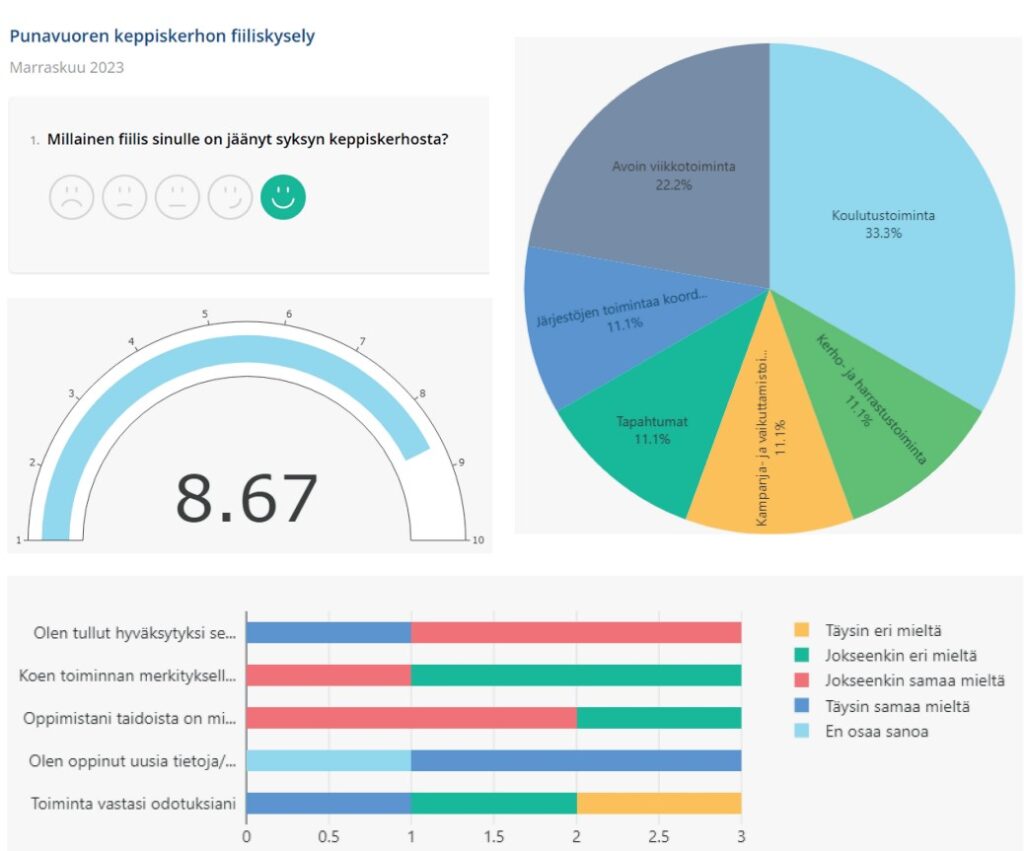User-Centered Development Improved the Usability of Jarjestin | Harticle
One of the tasks of the National Centre of Excellence Kentauri was to develop and systematise information production in the national youth field in Finland. Another task was to develop the nuorisotilastot.fi-service (The Youth Statistics) with regard to the almost completely missing data on youth organisations. These tasks, designated by the Ministry of Education and Culture, were taken forward by Humak University of Applied Sciences. In result the service Järjestin was launched for the pilot in Autumn 2023. (Järjestin means in Finnish Organiser).
I act as a team leader for the development package and as a project manager and product owner for the software development of Jarjestin. This was the tenth digital development process of my career.
As a user-centric developer, I am used to developing digital products for a diverse group of users. For the Järjestin, national youth organisations and stakeholders (Ministry of Education, Regional State Administrative Agencies, Tne Assosiation of Finnish Municipalities and Humak UAS) were consulted on several occassions during different phases of the project: from the pre-studies to the requirement specifications and the software development itself. Good groundwork enabled the software development to stay on schedule and within budget.

Multiple diversity, practices and concepts
According to the definition of the Ministry of Education, national youth organisation field consists of youth organisations, youth work organisations and youth work service organisations. The studies carried out in Kentauri-project highlighted different ways in which the national youth field of organisations collect data and also differences in the collected data. There were differences also in yearbooks and digital skills of the organisations in general.
“I can notice, that Järjestin has been developed in a user-centered way and the service takes into account the diversity of the field. It is easier to tailor the service for the needs of each organisation when the needs of the different kind of organisations has been taken into account”.
National organisations are different both in terms of their organisational structure and the way they operate. Some of the concepts that organisations use in their data collection are part of their identity. The same term may have different meanings in different organisations.
How is user-friendliness reflected in Järjestin?
The fact that Järjestin is free of charge is important for users. In the past, the information collected in the data collections has nor remained at the disposal of the organisations themselves. Now the organisations are able to use the information they collect for purposes as data management, strategic work, funding and project applications, impact demonstration, activity reporting and communication support. In an organisation, data is not only collected on the activities of the umbrella organisation, nut regional and local actors can collect their own data too. Time series allow organisations to monitor the development of their activities.
Collecting activity data has sometimes been a challenge, as the checkbooks in which records are made can go missing. Now the information can be collected in one place using the same questions. Our own data collection has become more harmonised with Järjestin.
The organisation does not have to adjust its organisational structure by the limits of the service, in Järjestin they can use their own structure. They can create their own folder structure to facilitate the information management and they can set their own access levels to the service. Data collection can be carried out also through links and emails, so the amount of user getting access to the service can be limited. This improves the data collection at the local level and by the volunteers, for example.
Data is collected in three ways. Basic information about the organisation is filled in when the service is set up and it is updated once a year. Activity data is collected in real time, for example through organisations’ own surveys. The basic organisational data and activity data forms are fixed and cannot be modified.
Own questionnaires include ready-made ones, such as the participation measurement. This was developed in the project. The surveys revealed that one consistent form of data collection among national youth organisations is their own surveys. This was something that the development team focused on to.
The service is in three languages, Finnish, Swedish and English. English was added as language option after the pre-studies highlighted the diversity of the organisations. Also the diversity of the digital skills in the organisations was taken into account in software development: making the user interface easy-to-use and creating sufficient user manuals. Also digital accessibility of the service was taken care of.
Next steps in the development of Järjestin
Version 1.0 of Järjestin was launched in Autumn 2023 for the limited group of organisations. During the software development phase, we collected areas of future development. The initital budget for the development of the service was very modest and the schedule was very tight. As the use of the system expands, there will arise issues which create needs for modification of the service and for development of new functions for instance in improving user-friendliness.
It is important that the work done by youth organisations is visible. Järjestin helps in this work in a concrete way. The work of the decision-makers will be easier when the data is more accurate and real time.
Text: Niina Autiomäki, FM, AmO. RDI-specialist, Humak Univeristy of Applied Sciences
Translation: Deep L, edited and modified by Jarmo Röksä
Publication date: 28.12.2023 | Translated 2.1.2024
Series: Humak Harticle
Publisher: Humak University of Applied Sciences

